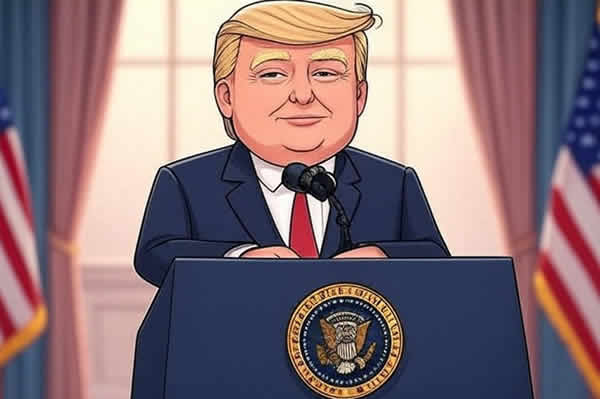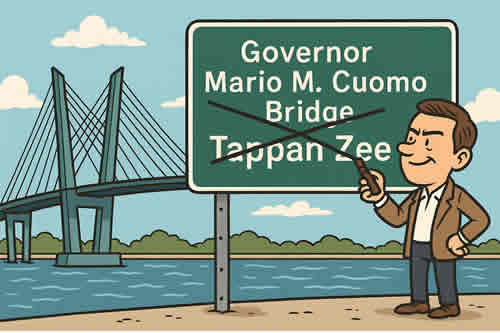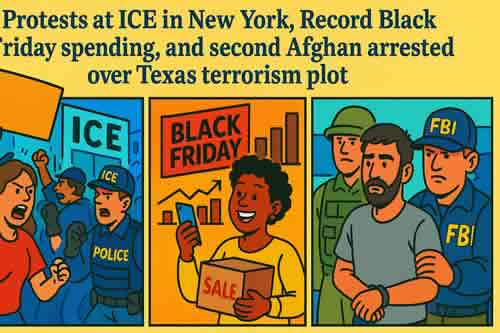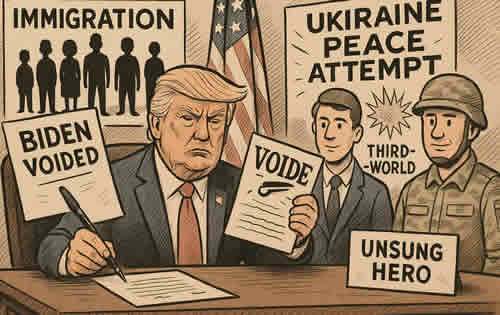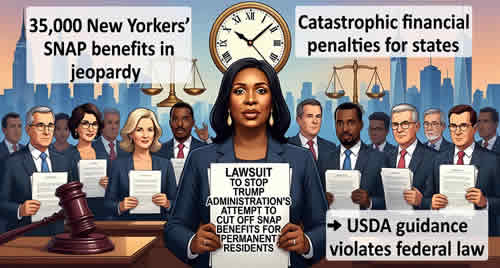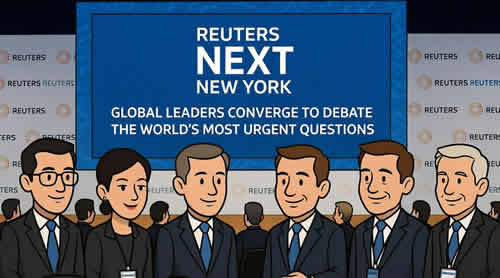
New York, December 3–4, 2025 – As the world struggles to navigate geopolitical fracture, AI upheaval, and a fragile economy, Reuters NEXT returns to New York this week, assembling a heavyweight roster of policymakers, CEOs and creators to ask a simple but urgent question: what kind of future are we building?
Over two days in the global financial hub, more than 700 leaders from business, government and civil society will take the stage across multiple tracks, tackling themes that range from war and peace to streaming wars, central bank policy to luxury retail.
A summit of power brokers
This year’s speaker lineup underlines the ambition of the summit. According to Reuters, confirmed speakers include:
- António Guterres, Secretary-General of the United Nations
- Christian Klein, CEO of SAP
- Naomi Gleit, Head of Product, Meta
- Jimmy Wales, Founder of Wikipedia
- Sarah Jessica Parker, executive producer and entrepreneur
- Shari Redstone, Chair of Sipur Studios
- Aidan Gomez, Co-Founder & CEO of AI firm Cohere
- Stéphane de La Faverie, President & CEO, The Estée Lauder Companies
- Pearlena Igbokwe, Chairman, Television Studios & Peacock Scripted, NBCUniversal
- Ilario Corna, CIO & CTO, International Olympic Committee
- Joanne Crevoiserat, CEO of Tapestry
- Rick Wurster, CEO of Charles Schwab
- Senior leaders from Google, Cisco, Moderna and others
They are joined by central bank governors, including representatives from Libya and Syria, underscoring how monetary policy and financial stability have become central to discussions about global risk and rebuilding trust in institutions. Reuters Agency
Reuters Editor-in-Chief Alessandra Galloni will lead interviews and discussions, supported by a team of senior journalists, as they press speakers on the decisions they are making now—and the consequences those choices will have for 2026 and beyond.
Six themes, one turbulent world
The official agenda is built around six core themes that reflect the fault lines of 2025:
- Geopolitics – Panels will explore an era of “growing geopolitical fragmentation,” as alliances are tested by regional conflicts, resource competition and shifting power centers.
- Economy & Markets – With investors nervously eyeing the outlook for 2026, speakers from banks, asset managers and major corporates will debate interest-rate paths, capital flows and the resilience of the global financial system.
- Banking & Finance – From regulatory scrutiny to fintech disruption, executives will drill into how financial institutions can stay profitable while financing the energy transition and safeguarding against systemic shocks.
- AI & Technology – Having moved from “AI experimentation to accountability,” the program delves into governance, transparency and the real business impact of generative AI, with leaders from Cohere, Google, Cisco and others.
- Climate & Sustainability – With pressure mounting after a year of record temperatures, CEOs and policymakers will look at how to fund decarbonization, reform supply chains and meet mounting disclosure demands.
- Business Leadership – Sessions will focus on leadership in an “increasingly contested information ecosystem,” where trust, internal communications and public credibility can make or break an organization.
Beyond the headlines: AI, energy and attention
What sets Reuters NEXT apart from many other executive gatherings is its framing as a live journalism experience. Interviews are run with the same rigor as a newsroom grilling: short on platitudes, long on specifics.
Some of the most closely watched conversations are expected to orbit three clusters of issues:
- AI disruption and accountability
- Tech leaders will be asked how they intend to govern powerful AI models, reduce bias, and protect jobs—while still chasing growth.
- Policy-makers and regulators in attendance are expected to push for clearer guardrails and more transparency on training data, safety testing and risk management.
- Financing the energy transition
- With trillions of dollars in investment needed, financial institutions and corporates will debate which models actually work, from green bonds to blended finance.
- Executives in energy, heavy industry and consumer goods will be pressed on supply-chain emissions, reporting standards and how they balance shareholder pressure with long-term climate commitments.
- The battle for attention – from streaming to social
- Media, entertainment and tech executives—including leaders from NBCUniversal, Meta and the IOC—will explore how audiences are fragmenting across platforms and what that means for business models built on advertising and subscriptions.
Why New York, why now
New York—still one of the world’s dominant hubs for finance, media and diplomacy—offers a symbolic backdrop. The city has been at the center of debates on inequality, climate resilience, and the future of work, making it a fitting stage for conversations about reshaping global systems.
The 2025 edition arrives at a moment when:
- Markets are trying to price in a new interest-rate regime and adjust to slower, more uneven growth.
- Governments are wrestling with how to regulate fast-moving technologies without stifling innovation.
- Public trust in institutions—from banks to newsrooms to international bodies—remains fragile.
In a statement ahead of the summit, Galloni framed the objective as cutting through the noise: Reuters NEXT is meant to “go beyond the headlines” and give decision-makers the “clarity, connections and action plans” they need to navigate the next few years.
What to watch for
While the full speaker page is hosted on the Reuters Events site and may feature additional names and sessions that aren’t publicly detailed elsewhere, a few flashpoints are already emerging from the published lineup and themes:
- How blunt will leaders be? Will CEOs and policymakers speak candidly about geopolitical risks, or stick to carefully scripted talking points?
- Concrete AI commitments. Will any firms announce new principles, partnerships or oversight mechanisms for AI deployment?
- Climate credibility. Expect close attention to what companies say about measurable progress toward net-zero goals rather than generic pledges.
- Media and misinformation. With Wikipedia’s Jimmy Wales, major broadcasters and platform leaders in the mix, discussions on information integrity and audience trust could become some of the most lively sessions.
A forum under pressure to deliver
Expectations for high-level summits like Reuters NEXT are rising. Critics often accuse elite gatherings of generating lofty rhetoric but little follow-through. Organizers, for their part, are positioning the New York summit as a working forum—where deals are sketched out in side rooms, cross-sector coalitions emerge, and some of the world’s most powerful decision-makers are forced to defend their strategies in public.
Whether the 2025 edition ultimately shapes policy, markets or boardroom agendas will only become clear in the months ahead. For now, the arrival of this year’s speakers in New York signals at least one thing: amid uncertainty and upheaval, the conversation about “what comes next” is very much underway.
Sources: Midtown Tribune , Reuters Agency+1

